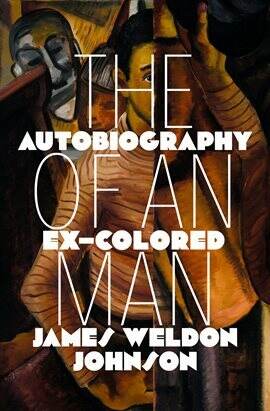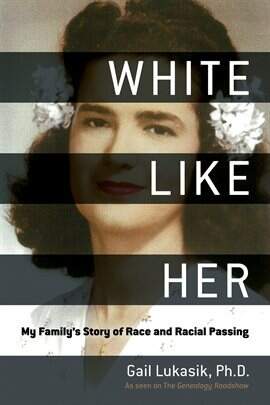We celebrate Black History Month in February. It’s a short month to recognize and wrestle with a complex history so long it predates the United States as a nation (Nicole Hannah-Jones’s The 1619 Project: A New Origin Story is an excellent recent work to check out). One of the legacies of Black History in the US is the history of Black Americans with lighter skin finding opportunities otherwise unavailable to them–economic, social and cultural, health and safety–by living as White Americans. This is known as “passing.” The choice to pass meant leaving family, community, and culture behind and severing ties with anyone or anything that might expose one as Black, either by accident or on purpose. It meant carrying a secret through a lifetime, and likely generations to follow, in order to not just thrive in a career or relationships, but to avoid the threat of violence or death. A difficult and devastating choice to face, and one that tore up families and lives.
Passing is a central theme in two newer books of historical fiction biography about Belle da Costa Greene (born Belle Marion Greener), which will be discussed together in the Hill Avenue Book Group (online, in Zoom) on Saturday, February 18 at 10:30 am. Belle Greene was the “personal librarian” to J.P. Morgan, and a driving force in building the manuscripts and incunabula collections of the Pierpont Morgan Library, which is now the Morgan Library & Museum.
The titles below, including the two books about Belle Greene, are recommended reads which address the theme of passing.
For more information about celebrating Black History Month, please visit https://www.cityofpasadena.net/library/wp-content/uploads/sites/11/BlackHistoryMonth2023.pdf
The Personal Librarian by Marie Benedict and Victoria Christopher Murray
The remarkable, little-known story of Belle da Costa Greene, J. P. Morgan’s personal librarian-who became one of the most powerful women in New York despite the dangerous secret she kept in order to make her dreams come true, from New York Times bestselling author Marie Benedict and acclaimed author Victoria Christopher Murray. In her twenties, Belle da Costa Greene is hired by J. Pierpont Morgan to curate a collection of rare manuscripts, books, and artwork for his newly built Morgan Library. Belle becomes a fixture on the New York society scene and one of the most powerful people in the art and book world, known for her impeccable taste and shrewd negotiating for critical works as she helps build a world-class collection. But Belle has a secret, one she must protect at all costs. She was born not Belle da Costa Greene but Belle Marion Greener. She is the daughter of Richard Greener, the first Black graduate of Harvard and well-known advocate for equality. Belle’s complexion isn’t dark because of her alleged Portuguese heritage that lets her pass as white-her complexion is dark because she is African American. The Personal Librarian tells the story of an extraordinary woman, famous for her intellect, style, and wit, and shares the lengths she must go-for the protection of her family and her legacy-to preserve her carefully crafted white identity in the racist world in which she lives.
The Vanishing Half by Brit Bennett
The Vignes twin sisters will always be identical. But after growing up together in a small, southern black community and running away at age sixteen, it’s not just the shape of their daily lives that is different as adults, it’s everything: their families, their communities, their racial identities. Ten years later, one sister lives with her black daughter in the same southern town she once tried to escape. The other secretly passes for white, and her white husband knows nothing of her past. Still, even separated by so many miles and just as many lies, the fates of the twins remain intertwined.
Juneteenth by Ralph Ellison
The story of a black man who passes for white and becomes a race-baiting U.S. senator. When he is shot on the Senate floor, the first visitor in hospital is a black musician-turned-preacher who raised him. As the two men talk, their respective stories come out. An unfinished novel by the author of Invisible Man.
Belle Greene by Alexandra Lapierre; Translated from the French by Tina Kover
New York in the 1900s. A young girl fascinated by rare books defies all odds and becomes the director of one of the country’s most prestigious private libraries. It belongs to the magnate J.P. Morgan, darling of the international aristocracy and one of the city’s richest men. Flamboyant, brilliant, beautiful, Belle is among New York society’s most sought after intellectuals. She also hides a secret. Although she looks white, she is African American, the daughter of a famous black activist who sees her desire to hide her origins as the consummate betrayal. Torn between history’s ineluctable imperatives and the freedom to belong to the society of her choosing, Belle’s drama, which plays out in a violently racist America, is one that resonates forcefully, and illuminatingly even today.
Waking Up White: And Finding Myself in the Story of Race by Debby Irving (Nonfiction)
For twenty-five years, Debby Irving sensed inexplicable racial tensions in her personal and professional relationships. As a colleague and neighbor, she worried about offending people she dearly wanted to befriend. As an arts administrator, she didn’t understand why her diversity efforts lacked traction. As a teacher, she found her best efforts to reach out to students and families of color left her wondering what she was missing. Then, in 2009, one “aha!” moment launched an adventure of discovery and insight that drastically shifted her worldview and upended her life plan. In Waking Up White, Irving tells her often cringe-worthy story with such openness that readers will turn every page rooting for her-and ultimately for all of us.
 Secret Daughter: A Mixed-Race Daughter and the Mother Who Gave Her Away by Laquita James
Secret Daughter: A Mixed-Race Daughter and the Mother Who Gave Her Away by Laquita James
June Cross was born in 1954 to Norma Booth, a glamorous, aspiring white actress, and James “Stump” Cross, a well-known black comedian. Sent by her mother to be raised by black friends when she was four years old and could no longer pass as white, June was plunged into the pain and confusion of a family divided by race. Secret Daughter tells her story of survival. It traces June’s astonishing discoveries about her mother and about her own fierce determination to thrive. This is an inspiring testimony to the endurance of love between mother and daughter, a child and her adoptive parents, and the power of community.
This title is available as an Audiobook with your PPL card in hoopla.
 The Autobiography of an Ex-Colored Man by James Weldon Johnson
The Autobiography of an Ex-Colored Man by James Weldon Johnson
In this classic novel from the Harlem Renaissance, a biracial musician living in the Jim Crow era chooses to pass as white and deals with the consequences.
First published in 1912, The Autobiography of an Ex—Colored Man is the story of an unnamed, light-skinned, biracial narrator born in a small Georgia town, during the years following the Civil War. He knows nothing about race, until he and his Black mother move to Connecticut and an episode at his school forces her to explain things to him.
As the narrator grows up, he pursues a higher education and begins traveling to cities like New York and Paris. He develops desires and ambitions, but everything changes when he returns to the South and witnesses the lynching of a Black man. The horror of the scene persuades him to live as white, but this decision comes at a cost…
The Autobiography of an Ex—Colored Man covered issues and themes not usually seen in the literature of its day. It offered a critical examination of race in society, as well as a look into Black society most white readers were unfamiliar with at the time.
Passing by Nella Larsen
Clare Kendry leads a dangerous life. Fair, elegant, and ambitious, she is married to a white man unaware of her African American heritage and has severed all ties to her past. Clare’s childhood friend, Irene Redfield, just as light-skinned, has chosen to remain within the African American community, but refuses to acknowledge the racism that continues to constrict her family’s happiness. A chance encounter forces both women to confront the lies they have told others – and the secret fears they have buried within themselves.
 White Like Her: My Family’s Story of Race and Racial Passing by Gail Lukasik (Nonfiction)
White Like Her: My Family’s Story of Race and Racial Passing by Gail Lukasik (Nonfiction)
A mystery author uncovers the truth of her own racial heritage in this memoir of family and racial passing–as seen on PBS’s Genealogy Roadshow .
Gail Lukasik’s mother Alvera had a secret she was determined to take to the grave. Though she lived as a white woman with a white family, she had been born Black. White Like Her is the story of Alvera’s “passing,” Gail’s struggle with the shame of her mother’s choice, and her subsequent journey of self-discovery and redemption.
In the historical context of the Jim Crow South, Gail explores her mother’s decision to pass, how she hid her secret even from her own husband, and the price she paid for choosing whiteness. Haunted by her mother’s fear and shame, Gail embarks on a quest to uncover her mother’s racial lineage, tracing her family back to eighteenth-century colonial Louisiana. In coming to terms with her decision to publicly out her mother, Gail changed how she looks at race, heritage, and her own identity.
This title is available as an eBook and Audiobook with your PPL card in hoopla.
The Gilded Years by Karin Tanabe
Anita Hemmings always longed to attend Vassar College, the country’s most exclusive school for women. Now, a bright, beautiful senior in the class of 1897, she is hiding a secret: with her olive complexion and dark hair, this daughter of a janitor and descendant of slaves has successfully passed as white. When Anita finds herself rooming with Louise “Lottie” Taylor, the scion of one of New York’s most prominent families, the two become fast friends. Anita learns what it’s like to be treated as a wealthy, educated white woman, and even finds herself in a heady romance with a moneyed Harvard student. But when Lottie becomes infatuated with Anita’s brother, Frederick, whose skin is almost as light as his sister’s, the situation becomes perilous.

